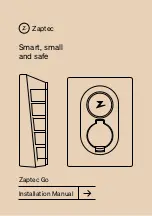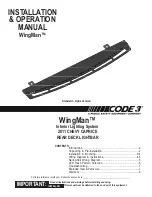
Avoid needless heavy braking. Some people drive in
spurts, heavy acceleration followed by heavy braking,
rather than keeping pace with traffic. This is a mistake.
The brakes might not have time to cool between hard
stops. The brakes will wear out much faster with a
lot of heavy braking. Keeping pace with the traffic and
allowing realistic following distances eliminates a lot of
unnecessary braking. That means better braking and
longer brake life.
If the engine ever stops while the vehicle is being
driven, brake normally but do not pump the brakes.
If the brakes are pumped, the pedal could get harder
to push down. If the engine stops, there will still be
some power brake assist but it will be used when the
brake is applied. Once the power assist is used up, it
can take longer to stop and the brake pedal will be
harder to push.
If the vehicle has Electronic Stability Control (ESC) and
the 2.0L turbocharged engine, it also has a hydraulic
brake boost feature which supplements the power brake
system to maintain consistent brake performance under
conditions of low brake booster vacuum. Low brake
booster vacuum conditions can include initial start up
after the vehicle has been parked for several hours,
very frequent brake stops, or high altitude driving. When
hydraulic brake boost is active, minor brake pulsation or
movement might be felt but this is normal. If brake pedal
feel changes or the brake pedal feels hard to push, the
system might not be receiving the intended brake boost
and the SVC BRAKE SYSTEM DIC message may be
displayed.
Adding non
‐
dealer/non
‐
retailer accessories can affect
vehicle performance. See
Accessories and
Modifications on page 6
‑
3
.
Antilock Brake System (ABS)
The vehicle might have the Antilock Brake System
(ABS), an advanced electronic braking system that
helps prevent a braking skid.
If the vehicle has ABS,
this warning light on the
instrument panel comes
on briefly when the
vehicle is started.
When the engine is started, or when the vehicle begins
to drive away, ABS checks itself. A momentary motor
or clicking noise might be heard while this test is going
on, and it might even be noticed that the brake pedal
moves or pulses a little. This is normal.
5-4
Summary of Contents for 2010 HHR
Page 6: ...2 NOTES vi ...
Page 8: ...Instrument Panel 1 2 ...
Page 48: ...Put someone on it Get it up to speed Then stop the vehicle The rider does not stop 2 16 ...
Page 112: ...2 NOTES 2 80 ...
Page 166: ...2 NOTES 3 54 ...
Page 262: ...2 NOTES 4 96 ...
Page 320: ...When you open the hood on the 2 0L L4 engine this is what you will see 6 18 ...
Page 443: ...Maintenance Record cont d Date Odometer Reading Serviced By Services Performed 7 15 ...
Page 444: ...Maintenance Record cont d Date Odometer Reading Serviced By Services Performed 7 16 ...
Page 462: ...2 NOTES 8 18 ...
















































